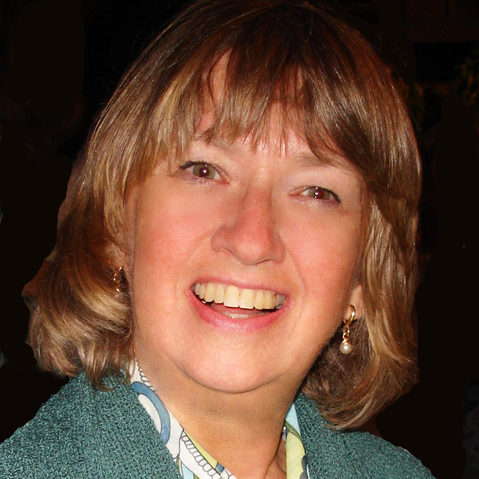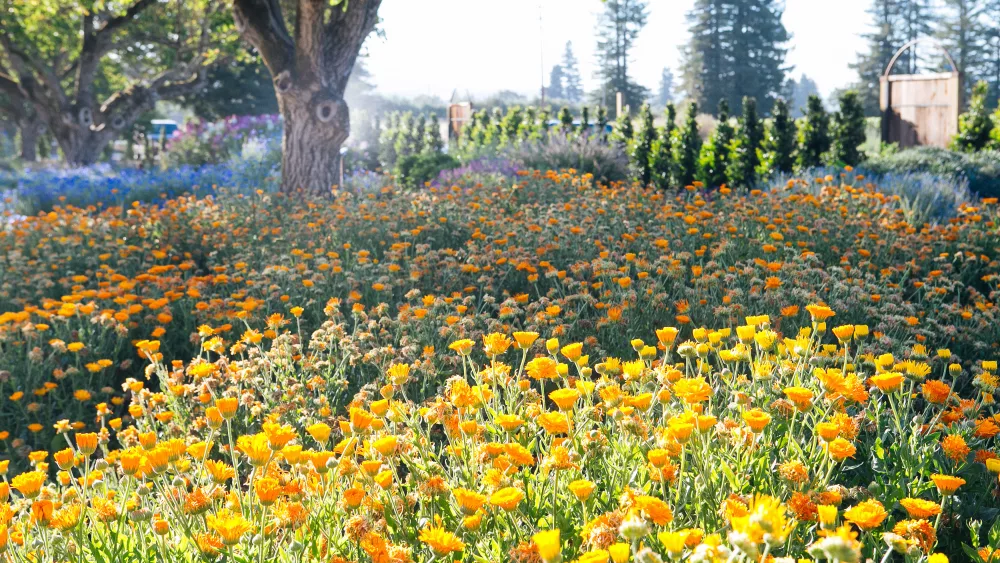
When professors and instructors turned off the lights and closed their classroom doors in March 2020, college and university campuses became strangely quiet. It was the beginning of a shutdown that lasted far longer than anticipated, but that didn’t mean putting education on hold. Instead, educators used resourcefulness, ingenuity and dedication to students to adopt new models for learning, and classes carried on. Today, almost a year and a half later, campuses are gradually coming back to life, and students are preparing for a new academic year. And when they return, they’ll discover an unexpected upside to the pandemic. Rather than diminishing education, the pandemic timeout allowed it to evolve and grow, creating new opportunities for learning.
Evolution
To minimize the pandemic’s impact on classes, local colleges and universities switched to remote learning quickly when the pandemic struck. At Santa Rosa Junior College, 85% of classes were in-person when the shelter-in-place began, and it transitioned to 97% virtual. The remaining 3% consisted of areas of study that the state deemed essential, such as police officer and firefighter training and medical classes like nursing. As a result, those programs continued. Students wore masks, shields and gowns and had regular temperature checks. “All continued to be taught live with very little spread,” says Superintendent/President Frank Chong, Ed.D. Not all classes could switch completely to distance learning, but they adapted. Instead of cooking on-site, for instance, culinary students picked up bags of groceries containing ingredients and instructions, prepared the required dishes at home and showed the results to instructors on Zoom. “Everybody made the best of it,” says Chong. “We were determined to keep the education pipeline open for students.”
Challenges were a given, but they weren’t a deterrent. Not all faculty members were familiar with conducting classes remotely on Zoom, so the distance education and technology staff taught them the skills they needed. Chong observes that faculty are learners as well as teachers and model behavior for others, and the new methods were a learning experience for them. “Once they got the hang of it, many loved it,” he says. Some students didn’t have access to the technology required for classes on Zoom, and SRJC provided 700 laptops to those who needed them and set up hot spots for internet access. Those who persevered made progress, despite the pandemic.
Some in our community had jobs and were laid off, or decided to change careers, and they took advantage of the free time to advance their education. Others who lived far away were disabled or had children home from school found online learning more convenient. “They have busy lives and prefer online, and technology is not a big jump for many of these students,” says Chong. One way or another, students completed their course requirements, and in 2021, SRJC had the largest number of graduates ever transferring to Sonoma State University. “It shows the resilience of students,” he says, adding that the assumption distance learning would be detrimental to education in all cases didn’t bear out. Instead, some students preferred it, and applications grew. While the JC is returning approximately 32% of its schedule to in-person classes for the fall semester, it will also keep many online, providing options that can reach more people and give students and faculty flexibility.
Perceptions
Karen Moranski, Ph.D., provost and vice president of academic affairs at Sonoma State University in Rohnert Park, believes the ability to adopt new strategies is one of the important lessons of the COVID-19 experience. “Online learning is doable and can produce quality learning,” she says. SSU offered some remote learning before the pandemic, she explains, but now members of the faculty have acquired new skills and teach better, and they’ve also discovered that students like getting lectures online. “[Students] love having access to taped lectures,” she says because they can use them to study for tests and prepare for assignments, giving them another strategy to enhance learning.
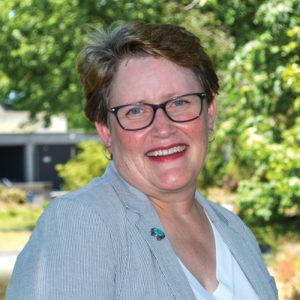
Moranski explains that teaching can occur in multiple modes. Traditionally, classes are in-person with an instructor having direct contact with students at a designated time in a fixed location. Technology, however, offers options. Synchronous learning occurs at a certain time live, usually on Zoom, while asynchronous learning gives students access to taped lectures at a time of their choice. In hybrid learning, faculty members teach part of the course in-person and part online, and in yet another model, one group of students in a class is in-person, while other students in the same class participate remotely. Such systems have become prominent because they give professors an effective way to communicate with students and distribute many of the materials online that they used to hand out in class. SSU uses Canvas, a Web-based learning management system, and students can use an app on a mobile device to access information such as syllabuses, reading lists and grades. They can also submit assignments, participate in discussions and see their course calendars. In addition, students have learned how to learn collaboratively through Zoom chat rooms and breakout sessions, and Moranski reports having faces on the screen can be a valuable tool that gets a good response. The new methods mean students can get a quality education without being physically on campus full time, and it’s also beneficial for faculty, who have found online teaching to be useful during the pandemic because it was often convenient for them to do some work online at times of the day that don’t conflict with other responsibilities. “Online learning is a tool that residential college campuses like Sonoma State can find useful in helping students learn,” she adds.
Dominican University of California in San Rafael pivoted to Zoom classes too, but it also made accommodations for disciplines that didn’t work well online. Lab classes in subjects such as chemistry and biology continued in person, as did clinicals in nursing, occupational therapy and physician assistant studies. If nursing students couldn’t get their usual off-campus clinical medical placements, they worked with the university administration to do COVID-19 testing in the university’s gymnasium. “They could get direct patient-care experience to get credit,” says Marly Norris, vice president for advancement and public affairs and the campus COVID-19 response lead. In addition, dance classes continued on campus, as the university offers a bachelor of fine arts degree in dance in partnership with the Alonzo King LINES Ballet. “We created outdoor dance studios for them,” she says, explaining that each studio had a dance floor and tent, and the students did their final performance in the Forest Meadows Amphitheatre, which is outdoors on the university’s grounds. “People have been very creative. They had to become experts,” says Norris.
Norris expects that classes will return to their pre-pandemic size in the fall, but it’s likely that students must wear masks. Labs, including those located in the university’s historic buildings, have air purifiers. As for large gatherings, such as theater productions and athletic events, most likely some restrictions will continue. One of the challenges in planning for a new academic year is the uncertainty that comes with changing conditions. “The state is aligning with the CDC,” says Norris, and Dominican is ready to make adjustments if necessary. In addition, she appreciates local assistance in finding ways to adhere to the requirements. “We’re very blessed to have a good relationship with the public health team at Marin Health and Human Services,” she says.
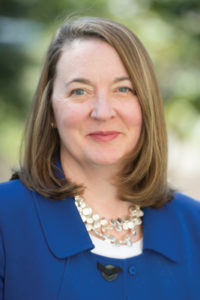
The College of Marin, which has campuses in Kentfield and Novato, began planning early for the coming academic year by hosting a COMmunity Hour session titled Post-Pandemic Visioning in April. “Over 80 faculty, staff and administrators attended and discussed the wins, challenges, and lessons learned from the past year,” reports Nicole Cruz, director of marketing and communications. Three main themes emerged: student access, instruction and remote work, and the college produced an infographic with the meeting’s findings. Faculty and staff plan to explore the themes in greater depth at a professional development week in August, where they will continue to think about strategies for the future. Following the lifting of state restrictions on June 15, administrators began analyzing the college’s hybrid schedule to find opportunities to expand it and increase the number of in-person class meetings. The fall semester will continue to offer fully online classes and hybrid courses. In addition, says Cruz, changes are underway. “Over the summer, we increased in-person support services for students, as planning continued for safely reopening our campuses. Listening to colleagues speak about welcoming folks back to campus, the word that kept coming up when discussing what we missed was ‘connections’—to our students, those we work with, and to the community. We’re looking forward to reconnecting both in-person and in ways that were successful virtually.”
Opening doors
At SSU, a new class is likely to add diversity to the student population. Without SATs, ACTs and participation in athletic activities and clubs in the last two years of high school, admissions officers have had to find new criteria to evaluate applications. “We now use a multi-factor scoring system to evaluate applicants,” says Julia Gonzalez, assistant vice president for strategic communications.

For the coming fall, SSU admitted 3,913 transfer students, which is a significant increase, and many of them are from the local area. Under the new multi-factor scoring system, applicants who were part of programs such as Upward Bound, Talent Search and AVID—an in-school support program for students in seventh through 12th grade—earn points, as do first-generation students. Gonzalez believes that applications and admissions were accessible to more students because the process was easier for those who might not have continued if ACT or SAT test scores had been a major factor. She explains that students from low-income families don’t have the resources to take the tests multiple times or enroll in prep classes to prepare for them the way more affluent students do. The alternate measures allowed them to provide more information about enrollment in advanced-placement and honors classes and qualitative measures such as community service, extracurricular activities and their personal backgrounds. The new system generated more applicants and greater diversity in the make-up of the applicant pool. “[The new system] leveled the playing field to some degree,” she says. “It has allowed us to look at each student much more holistically.”
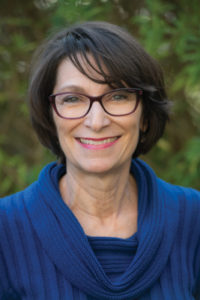
Moranski reports that the 23 schools in the California State University system are considering new ways to admit students, and a system-wide committee is looking at the use of test scores. “We’ve already started to move toward multiple measures,” she says, adding that the idea of looking at more than grade-point averages and SAT scores is likely to stay.
Dominican University went test-optional two years ago and already had a system in place to evaluate applications without test scores. “We are continuing that practice,” says Vickie Alleman, vice president for enrollment and marketing. “We’re looking for well-rounded students, she adds, who are involved in their communities, are active in clubs and hold leadership positions. Students’ essays are also important. Dominican uses its own writing prompts, and Alleman explains that the essay often makes a difference because it tells admissions officers about a student’s personal situation. Dominican also saw an uptick in applications, going from 1,000 to 4,000 during the pandemic, with many from the Bay Area, as students opt to stay closer to home.
Work on diversity, equity and inclusion started before the pandemic. “We were already working on it. We are positioned really well,” says Alleman. “Our ethnicity has increased tremendously.”
Confronting COVID
The pandemic isn’t over, and the lingering threat means campuses must re-examine COVID-19 protocols in place for classes to resume safely. Dominican University has had people working on campus throughout the pandemic, and during the summer last year, they went through every single space to determine how to protect them throughout the 2020-21 academic year. The result was a guide to best practices. “We put it all together in a month,” says Norris. Among the measures, they installed plexiglass panels in offices, reduced capacity in elevators, turned off water fountains and spaced bathroom stalls. In addition, they posted signs with the standard requirements, such as wearing masks and physically distancing, everywhere—on every entrance to every building and on A-Frames outdoors all over the campus. “Right now, as we plan for fall, we’re working with CDC guidance and consulting with MCHHS,” says Norris. She adds that Dominican will require everyone who is eligible to be vaccinated, and she expects people who can’t be vaccinated to continue having to test weekly.
Santa Rosa Junior College will not require vaccinations. “People don’t like to be told what to do,” says Chong, who adds that enough people have exemptions that it wouldn’t be possible to have everyone vaccinated even if the state-mandated it. “Initially I thought it was simple. It’s very complicated,” he says. The college will do testing in certain circumstances. Athletics, for example, will have regular tests, and testing might be available on-demand if students want it. “We’re being thoughtful; we’re being safe,” he says, adding that the college will do everything possible to protect students and make their educational experience a rich one.
The College of Marin requires everyone who plans to be on campus to complete symptom screening online daily but has not yet made a decision to require employees and students to be vaccinated.
In April, the California State University and University of California systems jointly announced a policy that would require COVID vaccinations for faculty, students and staff on all their campuses for 2021. The policy had two important conditions, however. A COVID vaccine must have full FDA approval and be available for everyone on campus. The UC system subsequently dropped the conditions, but the CSU system, which includes SSU, plans to wait for full FDA approval. Gonzales reports that for fall, vaccinations at SSU will be contingent on those two pieces. “However, this could change,” she says. “We are continuing to evaluate the situation as the fall term approaches.”
Outcomes
Meanwhile, higher-education institutions are embracing change and thinking about their work in new ways. Moranski believes that new insights about learning resulting from the pandemic will benefit student success, and universities and colleges will be even better at graduating students and helping them find ways to pursue their dreams. “Everything we’ve learned in COVID is going to help support students better,” says Moranski, who points out that resilience is also a key factor in success. “Students have stayed in college. They want their degrees,” she says, and that desire has motivated them to discover new capacities in themselves and learn how to work in online study groups, approach faculty differently and engage in groups on Zoom. The circumstances have been challenging, but they’ve discovered that they can continue to learn. Moranski advises them to be aware of what worked for them and what didn’t over the last year and a half. “They need to know whether they do better learning in a classroom or whether they might be interested in taking some classes online and some in person,” she says. “Learning to be flexible about learning is what students have gotten over the past year.”
A return to classes is imminent. “We’re ready to come back to campus, and students are, too,” says Gonzales, adding that a college is more than just classrooms. “The social aspect of a learning community—such as you would find on a university campus, where there are diverse voices—embodies a richness and multiple activities that are core to a learning experience. We’re excited to be able to resume that.”
Education will also continue, but in new ways that offer new opportunities and show the resilience of the human spirit. And that’s the silver lining in an otherwise dark time.
Visioning Themes
Among the adaptions the College of Marin is working to retain are the following:
Streamlined processes to improve the student experience.
Improved online support services and resources for students.
Increased access to remote counseling and academic support.
An increase in virtual events for students, families and the community.
Use of a management system (Canvas) to increase students’ access to course content.
Synchronous Zoom classes and innovation in teaching practices.
Virtual office hours to provide flexibility, improve student access and use time more efficiently.
Working remotely to increase flexibility and make better use of time.
Transitioning from paper to digital processes to streamline business operations.
Source: College of Marin
The White House Challenge
Sonoma State University is a participant in President Joe Biden’s White House Challenge, an initiative that enlists colleges and universities to encourage everyone in their campus communities to get vaccinated. Participating schools agree to take three key actions:
- Engage every student, faculty and staff member to make sure that every member of the campus community knows they are eligible for a vaccine and has the resources to find one.
- Organize the college community and lead the way by identifying champions for vaccine efforts across campus and implementing a plan to get as many members of the college community vaccinated as possible.
- Deliver vaccine access for all by going out to meet members of the community in places where they gather, take vaccines on-site, and make it easy for students, staff and faculty to get vaccinated at sites nearby them this summer.
Source: whitehouse.gov/covidcollegechallenge


